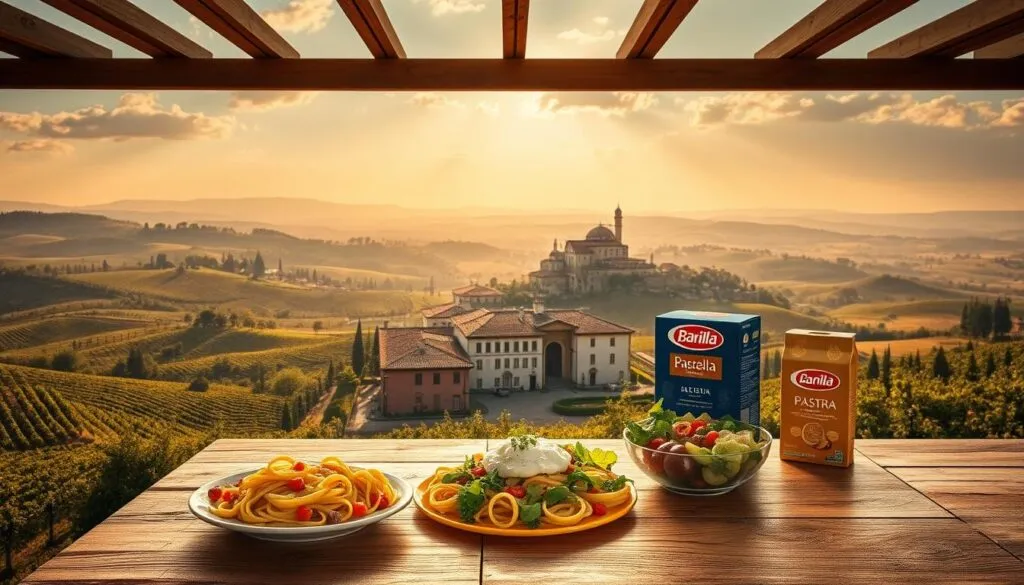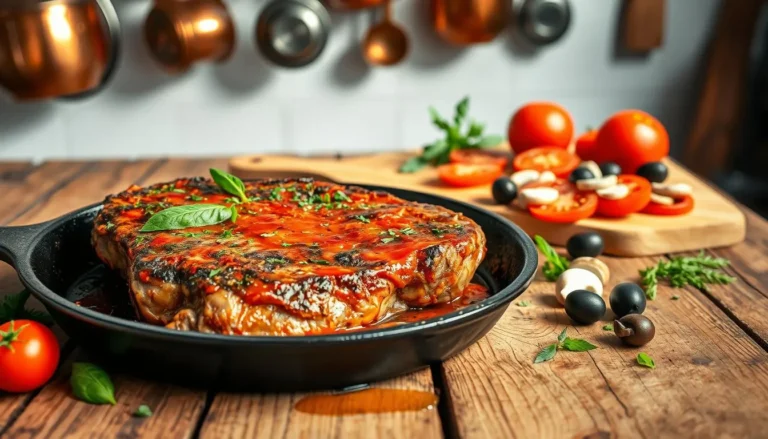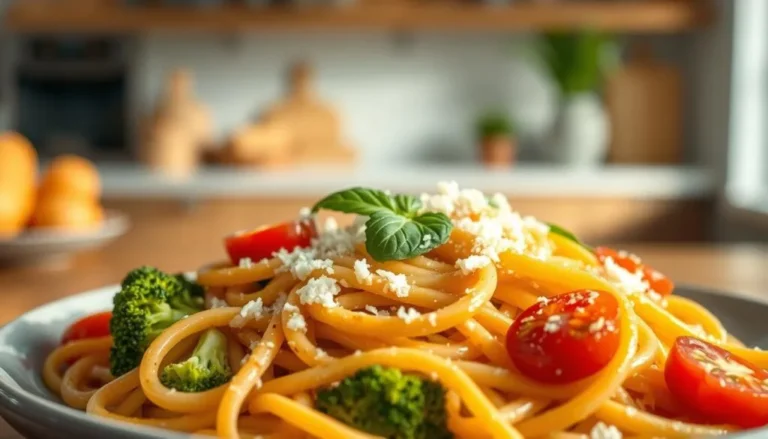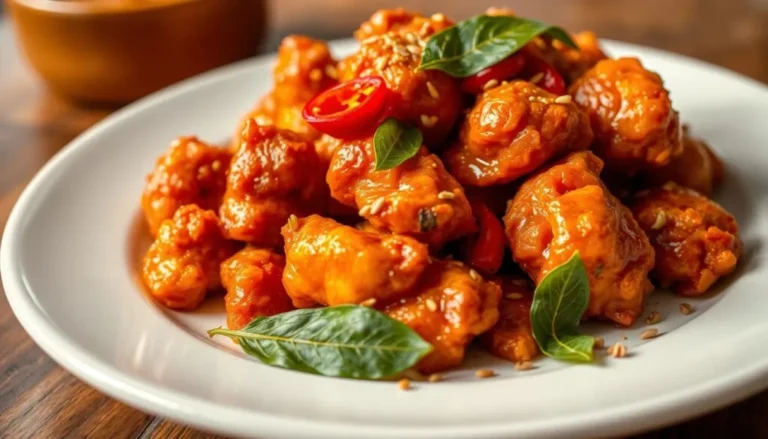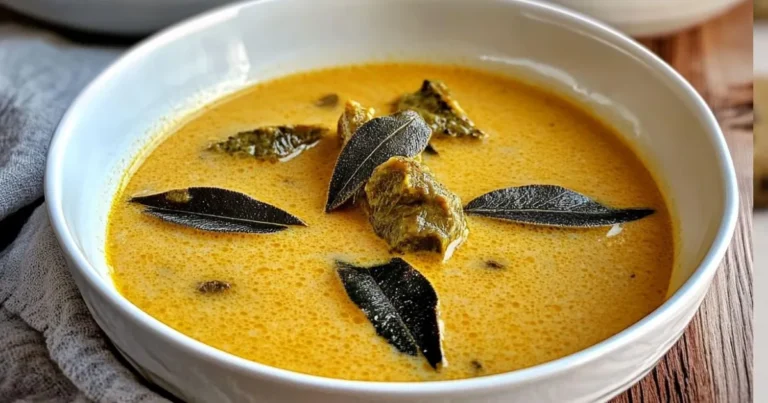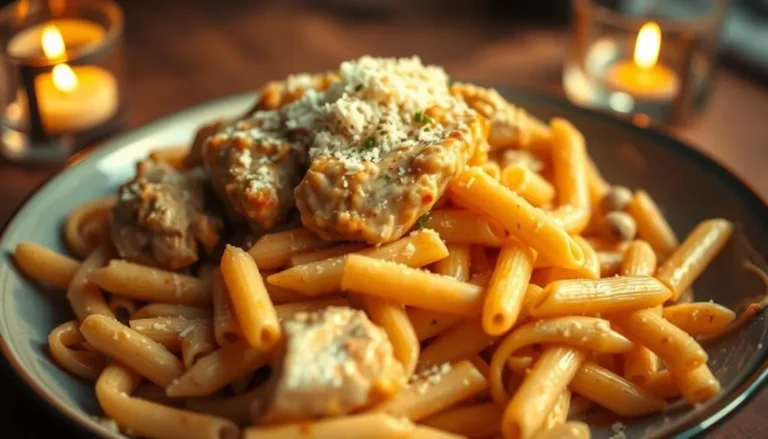Barilla Pasta: How to Make the Perfect Al Dente Dish
Table of Contents
Every great meal starts with a passion for authentic ingredients and the right cooking technique. Barilla pasta is key to making the perfect al dente dish. It turns simple ingredients into a culinary masterpiece. Whether you’re a home cook or an aspiring chef, mastering Italian cuisine starts with pasta preparation.
Cooking Barilla pasta is more than just boiling water and adding noodles. It’s a delicate process that needs precision, care, and respect for traditional Italian cooking. You’ll learn the secrets to making your pasta dishes extraordinary.
Key Takeaways
- Master the essential techniques of al dente cooking
- Understand the importance of proper water and salt ratios
- Learn how to enhance Barilla pasta’s natural flavors
- Discover professional Italian cooking techniques
- Transform your home cooking with expert pasta preparation tips
The Legacy of Barilla Pasta in Italian Cuisine
Barilla pasta is more than a food item. It’s a symbol of a long history in Italian cooking, lasting nearly 150 years. Starting in Parma, Italy, this famous pasta brand has changed Italian food worldwide. It’s known for quality and new ideas.
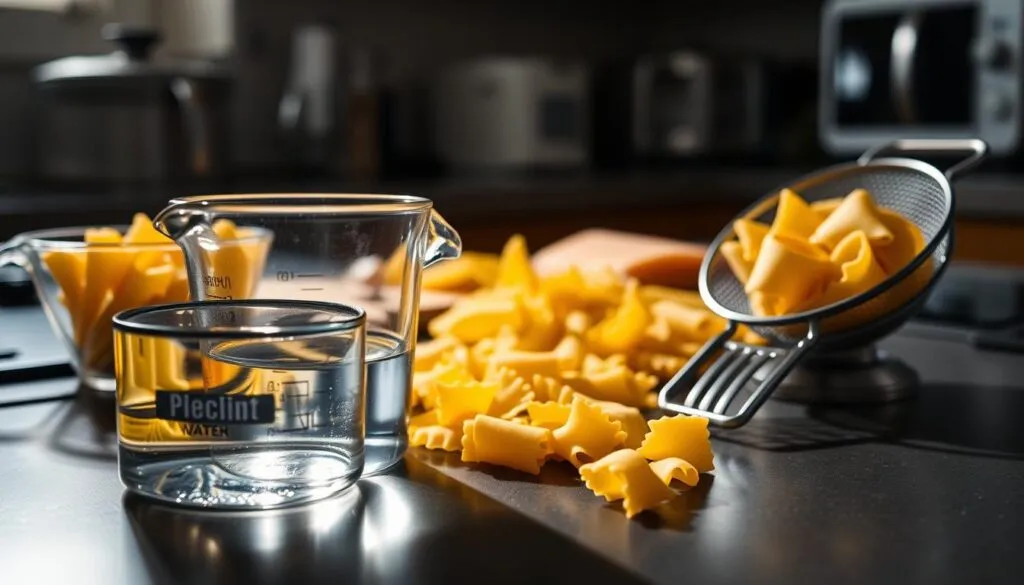
The Barilla story started in 1913 with Pietro Barilla’s birth in Parma. This marked the beginning of a global pasta legend. Making pasta was a family passion that lasted for generations.
Pioneering Pasta Production
Barilla’s path to fame involved big changes. In 1952, they stopped making bread to focus only on pasta. This choice made them stand out among pasta brands.
- Established in Parma, Italy in 1913
- Focused exclusively on pasta production since 1952
- Recognized for modern manufacturing techniques
- Championed Italian cuisine internationally
Quality Standards in Durum Wheat Semolina Selection
The secret to Barilla’s great pasta is its choice of durum wheat semolina. They have high standards for the best grains in their pasta.
| Quality Criteria | Barilla Standards |
|---|---|
| Wheat Origin | Carefully selected Italian and international sources |
| Protein Content | Minimum 13% protein for optimal texture |
| Grain Inspection | Multiple quality checkpoints before processing |
Keeping these high standards, Barilla keeps pasta lovers connected to true Italian cooking.
Essential Equipment for Cooking Barilla Pasta
Getting the perfect pasta dish starts with the right tools. Your pasta recipes will stand out with quality equipment. It makes cooking easier and more precise.
Let’s look at the must-have tools for pasta lovers:
- Large Pot: Pick a pot where pasta can move freely. Chef Lorenzo Boni says use one gallon of water for each package of pasta.
- Heavy-Bottom Stockpot: It keeps heat even and stops burning
- Sturdy Colander: It’s key for quick and easy pasta draining
- Long-Handled Wooden Spoon: Great for stirring and stopping pasta from sticking
- Timer: It’s vital for getting the perfect al dente texture
When picking your pasta cooking tools, think about these important points:
- Durability of materials
- Size right for your pasta amounts
- How well it conducts heat
- How easy it is to clean
Quality kitchen equipment changes your pasta cooking game. With the right tools, you’ll make pasta dishes that wow everyone.
The Science Behind Perfect Water-to-Pasta Ratios
Getting the perfect al dente cooking starts with knowing the water and pasta ratio. Chefs say water is key to making a tasty meal from simple ingredients.
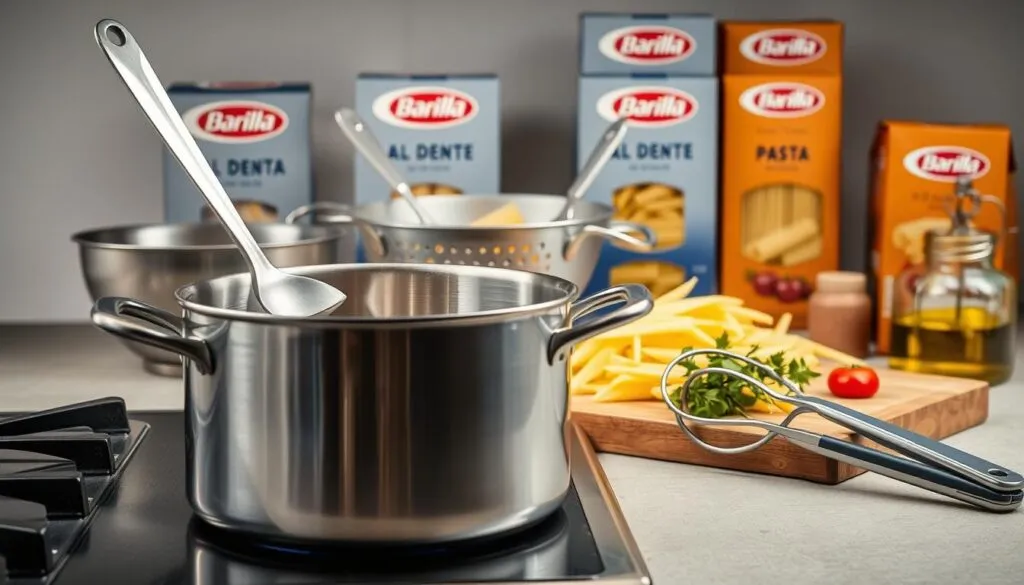
When cooking dried pasta, the water ratio is not random. Experts suggest using 4-6 quarts of water for every pound of pasta. This ensures the best cooking results.
Understanding Water Measurements
Right water measurements can change your pasta’s texture and taste. Here are some tips for water management:
- Use 1-2 tablespoons of salt per pot of boiling water
- Ensure water tastes like sea salt for maximum flavor
- Always start with boiling water, not cold
Pasta Portion Guidelines
Figuring out the right pasta portion is important. It helps avoid waste and ensures the perfect serving size. Here are some guidelines:
- 2 ounces of dried pasta per person for a standard serving
- Adjust portions based on individual appetite
- Account for additional ingredients like sauces or proteins
Temperature Control Tips
Keeping water temperature steady is key for al dente cooking. Boiling water helps pasta cook evenly. This prevents a sticky, unpleasant texture. Try to keep the water at a steady, rolling boil while cooking.
Professional chef Lorenzo Boni recommends using one gallon of water for one package of pasta to achieve the best results.
Mastering the Art of Salting Pasta Water
Salting pasta water is key in authentic italian cuisine. It makes your al dente cooking go from good to great. Professional chefs know salt does more than just add flavor. It’s a crucial step in making a dish delicious.
Here are some important tips for salting pasta:
- Add salt only after water reaches a rolling boil
- Use approximately 4 teaspoons of salt per gallon of water
- Aim for water that tastes slightly over-salted
The science behind salting is interesting. Properly salted water brings out the pasta’s natural taste. It also helps get that perfect al dente texture. Salt makes the water boil at a higher temperature, leading to more even cooking.
“Salt is the secret weapon of great pasta cooking” – Italian Culinary Experts
Your pasta water should taste like the sea – well-seasoned but not too salty. This way, your pasta absorbs the right amount of salt. It creates a rich, satisfying flavor that’s true to italian cuisine.
Keep in mind, different pasta shapes might need different amounts of salt. Thicker pasta might need more salt, while delicate shapes need less. Try different amounts to find what works best for your favorite Barilla pasta shapes.
How to Cook Different Barilla Pasta Shapes
Cooking pasta is an art. Knowing how to cook different Barilla pasta shapes can make your pasta dishes amazing. Each shape needs special care to bring out its best taste and texture.
Understanding each pasta shape is key to making dishes like a pro. Let’s dive into the best ways to cook various Barilla pasta types.
Long Pasta Varieties: Spaghetti and Linguine
For long pasta like spaghetti and linguine, follow these steps:
- Use a large pot to prevent sticking
- Stir occasionally during the first few minutes of cooking
- Test for al dente texture around 8-10 minutes
- Reserve 1 cup of pasta water for sauce blending
Short Pasta Options: Penne and Rigatoni
Short pasta shapes need different cooking methods:
- Ensure water is at a rolling boil before adding pasta
- Cook for 10-12 minutes for perfect texture
- Choose sauces that cling to the pasta’s ridges
- Drain immediately to prevent overcooking
Specialty Shapes: Ditalini and Seasonal Varieties
Specialty shapes like Barilla’s seasonal snowflake pasta offer unique cooking experiences. The limited edition snowflake pasta takes about 7 minutes to reach al dente perfection. It costs around $1.76 for a 12-ounce box.
“Cooking pasta is about understanding each shape’s unique character.” – Culinary Expert
The secret to amazing Barilla pasta is in the cooking times, water temperature, and sauce pairing. Experiment and enjoy your pasta-making journey!
Achieving the Perfect Al Dente Texture
Mastering al dente cooking is key to authentic Italian cuisine. It turns simple pasta into a culinary masterpiece. Al dente means “to the tooth” in Italian, which is the perfect texture. It’s firm yet tender, with a slight resistance when bitten.
To get the perfect al dente texture, keep these tips in mind:
- Use a timer to prevent overcooking
- Test pasta frequently during the last few minutes of cooking
- Remove pasta from heat when it’s still slightly firm in the center
Professional chefs have their own methods for consistent results:
- Start testing pasta 1-2 minutes before the recommended cooking time
- Remove a single piece and bite into it to check the center
- Look for a tiny white dot in the pasta’s core – this indicates perfect al dente texture
The science behind al dente cooking is interesting. Cooking pasta to this precise texture lowers its glycemic index. It also improves nutrient absorption. This makes you feel more satisfied and enjoy a healthier meal.
“Timing is everything in al dente cooking. A difference of just 30 seconds can transform your pasta from perfection to disappointment.” – Chef Michael Handal
| Pasta Brand | Cooking Time | Al Dente Quality | Sauce Absorption |
|---|---|---|---|
| San Remo | 12 minutes | Soft | Poor |
| Barilla | 9 minutes | Good | Moderate |
| Liguori | 8 minutes | Excellent | Superior |
Remember, practice makes perfect. Each pasta shape might need slight cooking time adjustments. By focusing on these details, you’ll improve your al dente cooking. This will bring authentic Italian taste to your table.
Pairing Sauces with Your Barilla Pasta
Choosing the right pasta sauces can turn a simple meal into a feast. The sauce you pick greatly affects the taste and fun of your pasta dishes. Knowing which sauces go well with different pasta shapes can make your cooking better and impress your guests.
Classic Tomato-Based Sauces
Tomato-based sauces are key in Italian cooking. They pair well with many Barilla pasta shapes:
- Spaghetti: Goes great with marinara or arrabbiata sauce
- Penne: Works well with chunky tomato sauces that stick in the ridges
- Linguine: Is lovely with light, fresh tomato concasse
Cream and Cheese-Based Options
Creamy sauces need the right pasta to get the best taste and texture. Wider, flatter pasta shapes are best for these rich sauces.
- Fettuccine is perfect with alfredo sauce
- Rigatoni holds thick cream sauces well
- Farfalle makes great pairs with cheese-based dishes
Light and Fresh Sauce Combinations
If you want something lighter, choose delicate sauces. Olive oil-based and herb-infused sauces make refreshing meals for warm nights.
Pro tip: Always save some pasta water to help your sauce stick to the noodles!
Common Pasta Cooking Mistakes to Avoid
Perfecting al dente cooking means avoiding common mistakes. These errors can turn a great meal into a bad one. Knowing these mistakes helps you make pasta dishes that taste like they’re from a restaurant.
Preparing pasta is more than just boiling water and adding noodles. Many home cooks make simple mistakes. These mistakes can ruin the texture and flavor of your pasta.
- Overcooking pasta beyond recommended cooking times
- Using insufficient water during cooking
- Neglecting to salt water properly
- Adding oil directly to cooking water
- Rinsing cooked pasta
Professional chefs say that perfect pasta cooking needs precise techniques. Angel hair pasta, for example, needs careful attention. It should cook for only 2-4 minutes. Checking your pasta after one minute can stop it from becoming mushy.
“Cook pasta like an Italian – with passion and precision!” – Chef Recommendation
Key tips for great al dente cooking include using about 6 quarts of salted water for every pound of pasta. Stir the pasta at least three times while it cooks. Also, use 1 teaspoon of salt for every 4 cups of water to get the right flavor.
Your aim is to turn simple ingredients into a meal you’ll remember. Mastering these basic pasta cooking techniques is key.
Conclusion
Your journey into Barilla pasta cooking has changed how you see Italian food. You now know how to make pasta just right, which makes simple dishes special. You’ve learned about water ratios and how to salt it just right, making your meals taste like they’re from a restaurant.
Barilla pasta is more than just a staple. It comes in many shapes and types, including gluten-free options. This means you can try new things and join a trend of creative cooking.
Cooking great pasta is all about passion and practice. Whether it’s a quick dinner or a big event, you’ll make delicious food. Let Barilla pasta be your tool for creating amazing Italian dishes.
You’re now a pro at making pasta. Keep trying new things, tasting different flavors, and enjoying the world of Barilla pasta and Italian food.
FAQ
What does “al dente” mean when cooking Barilla pasta?
“Al dente” means “to the tooth” in Italian. It’s about pasta that’s firm but not hard. Barilla pasta should have a slight chewiness. This texture is key for great flavor and feel in your dishes.
How much water should I use when cooking Barilla pasta?
Chef Lorenzo Boni says use one gallon of water for each package of Barilla pasta. This ratio prevents sticking and ensures even cooking. It helps the pasta cook perfectly.
How do I know when Barilla pasta is cooked perfectly?
To check if pasta is done, take a piece out a minute before the package says. It should feel firm but not hard. It should also look even in color and feel tender when chewed.
Should I add oil to my pasta water?
No, don’t add oil to your pasta water. Oil stops sauce from sticking to the pasta. Use salted water instead. Stir it occasionally to prevent sticking.
How much salt should I add to pasta water?
Chef Lorenzo Boni suggests using 1-2 tablespoons of salt for each gallon of water. Add the salt after the water boils. This boosts the pasta’s flavor and helps it cook right.
Can I cook different shapes of Barilla pasta for the same amount of time?
No, different pasta shapes need different cooking times. Thin pasta cooks faster than thick shapes. Always check the package and start testing a minute or two early for the best texture.
What’s the best way to drain Barilla pasta?
Drain pasta quickly in a large colander, but don’t rinse it. Keep a cup of pasta water for your sauce. Shake the colander to remove excess water. Don’t let the pasta sit too long.
How do I prevent my pasta from becoming sticky?
To avoid sticky pasta, use plenty of water and stir occasionally. Don’t overcook. After draining, toss the pasta with sauce or a bit of olive oil. This keeps it from becoming clumpy.

